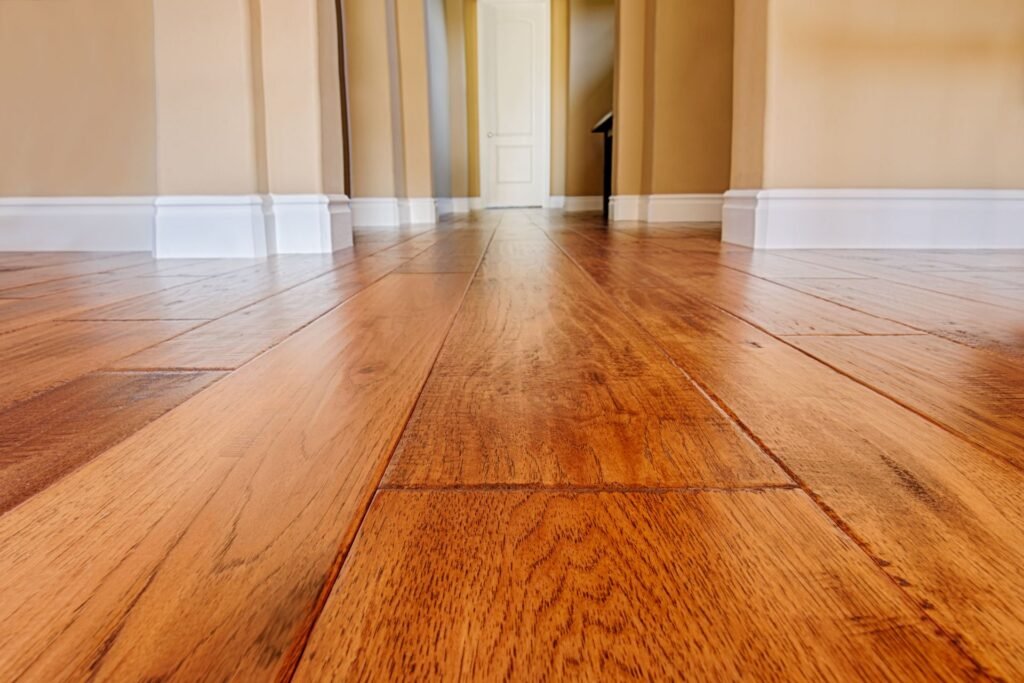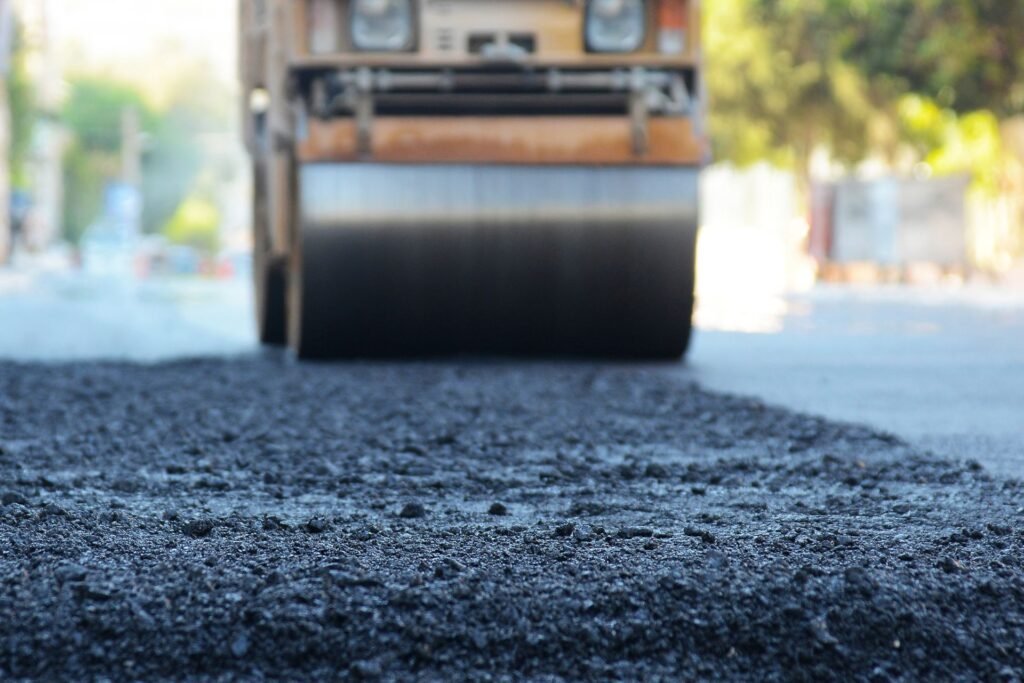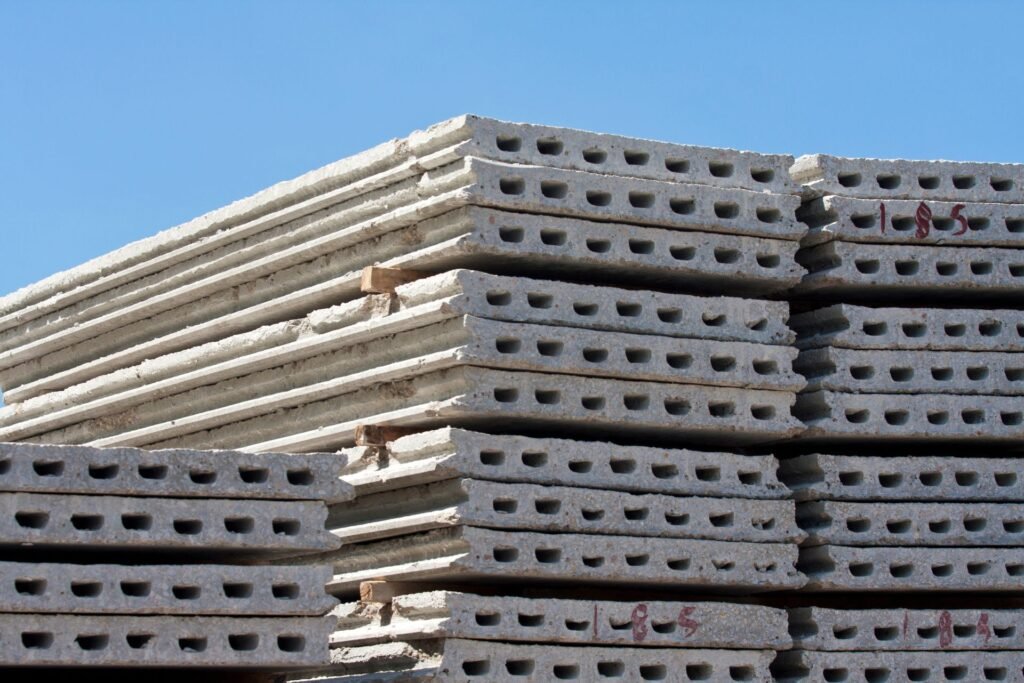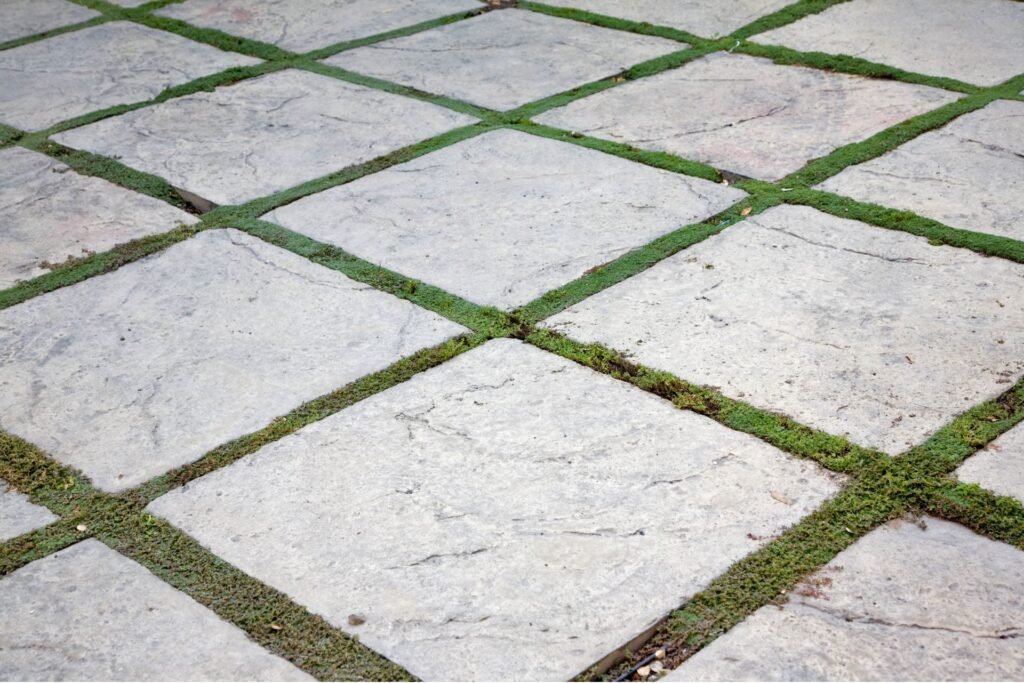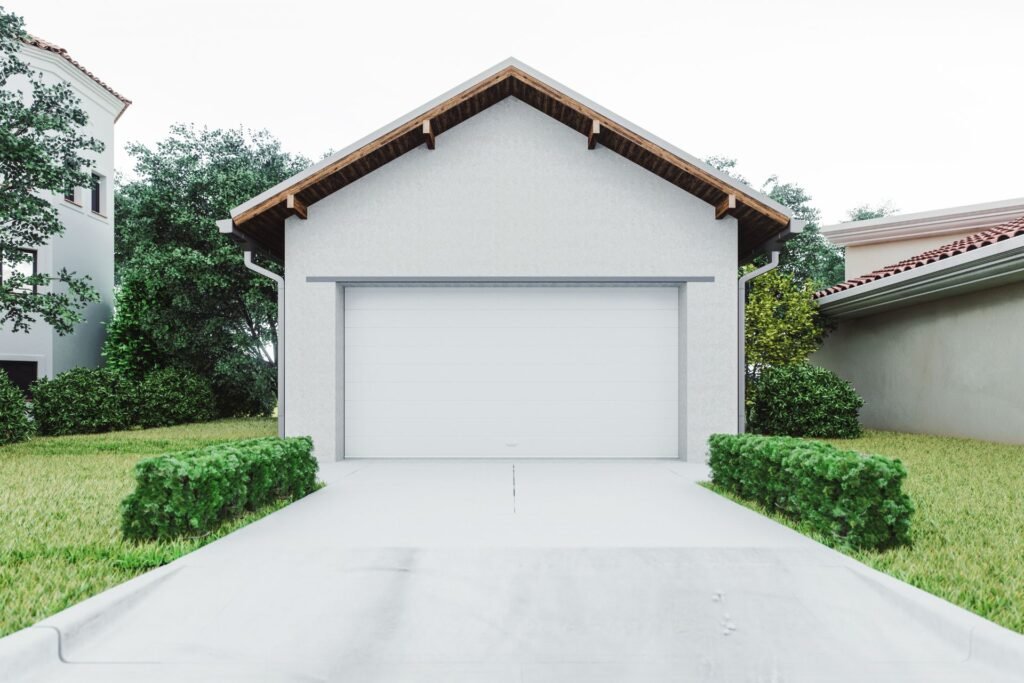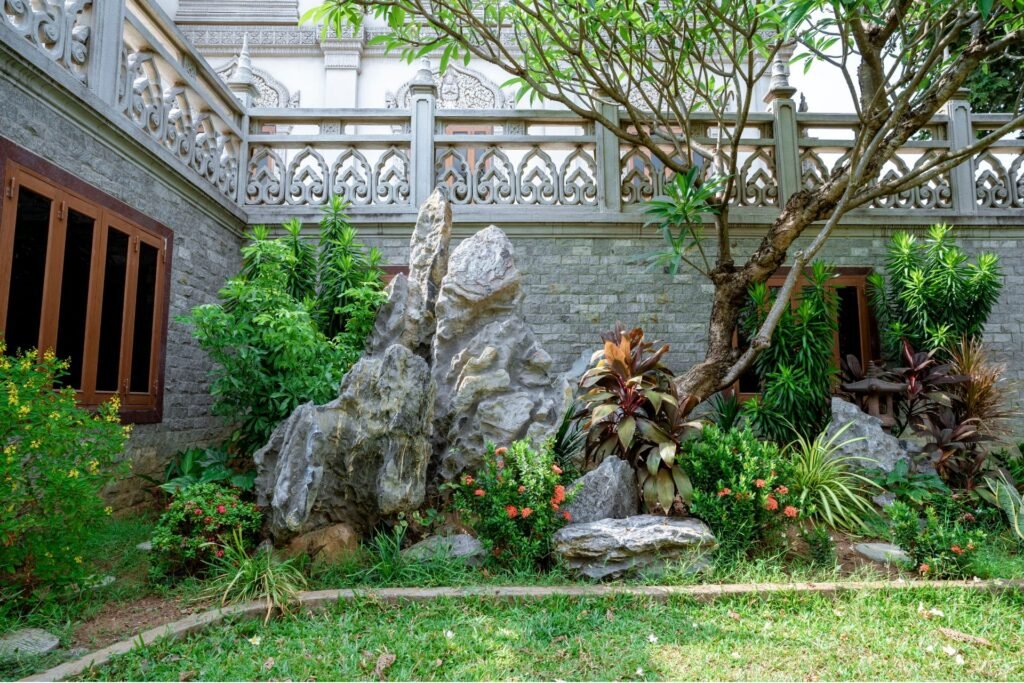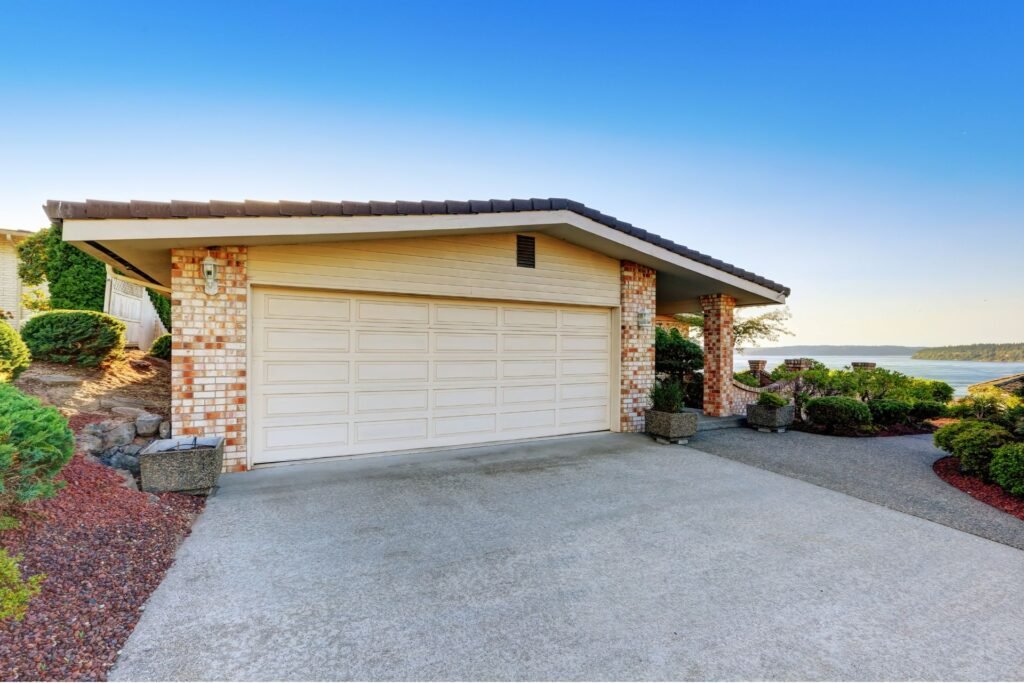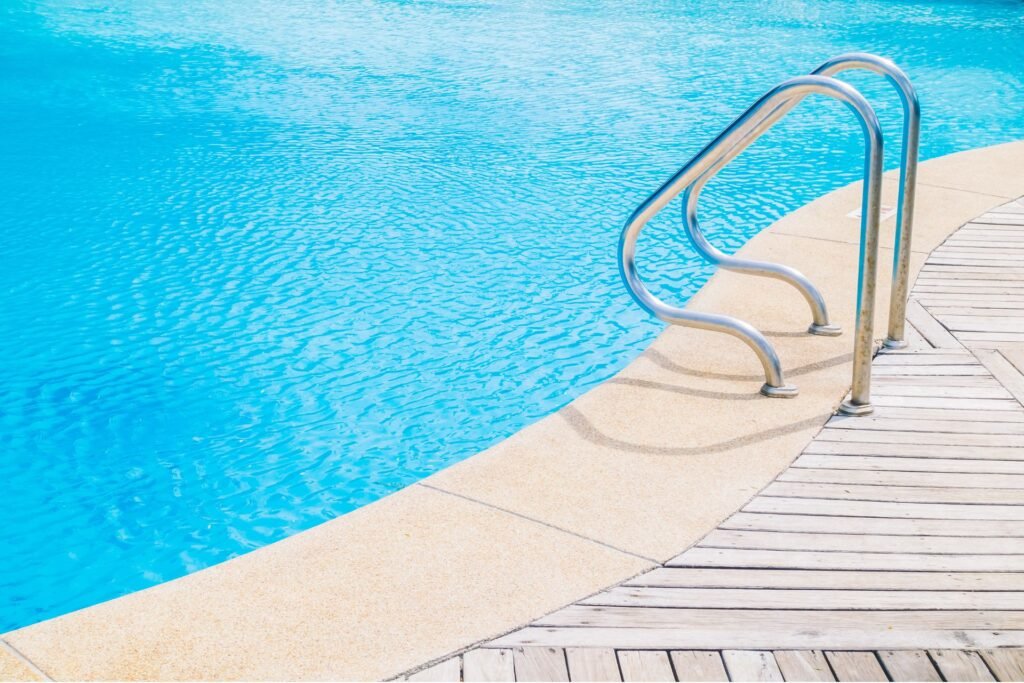Welcome to our comprehensive guide on choosing between concrete slab and timber flooring for your New Zealand home. In this article, we’ll delve into the key differences, benefits, and drawbacks of both flooring options, helping you make an informed decision for your construction or renovation project. Whether you’re looking for durability, aesthetic appeal, or cost-effectiveness, understanding the pros and cons of each type of flooring is crucial. We’ll cover everything from initial installation costs and long-term maintenance to environmental impact and suitability for various NZ climates, ensuring you have all the information you need to choose the right flooring for your needs.
Concrete slab and timber floors are popular flooring options in New Zealand, each offering distinct advantages. Concrete slabs are known for their durability, stability, and excellent thermal mass, making them ideal for colder climates and long-term value. On the other hand, timber floors provide a warm, natural aesthetic, better insulation, and a softer feel underfoot, adding character and comfort to homes. When choosing between the two, consider factors like cost, maintenance, environmental impact, and climate suitability to determine the best fit for your needs.
Table of Contents
Understanding The Basics
Concrete Slab Flooring
A concrete slab floor is a flat, horizontal surface made of cast concrete, commonly used as a foundation for buildings. It is particularly favored for its strength, durability, and ability to provide a solid base for various structures, including residential homes, commercial buildings, and industrial facilities.
Types of Concrete Slabs
Raft Slabs: Also known as mat slabs, these are thick, reinforced concrete slabs that spread the load of the structure over a large area, making them ideal for sites with poor soil conditions.
Waffle Slabs: Characterized by a grid pattern of ribs on the underside, waffle slabs are lighter and use less concrete than solid slabs, providing excellent support while reducing material costs.
Typical Construction Process
1. Site Preparation: Clear and level the site, removing any vegetation and debris.
2. Formwork Installation: Set up wooden or metal forms to outline the shape of the slab.
3. Reinforcement Placement: Lay down steel bars or mesh to reinforce the slab and provide additional strength.
4. Concrete Pouring: Pour the concrete mixture into the formwork, ensuring it is evenly distributed and leveled.
5. Finishing: Smooth the surface with trowels and apply any desired finishes, such as textured or polished surfaces.
6. Curing: Allow the concrete to cure and harden over several days, ensuring it reaches the required strength before removing the formwork.
Timber Flooring
A timber floor is a flooring solution made from natural wood, offering a warm and aesthetically pleasing appearance that complements a variety of interior styles. Timber flooring is known for its versatility, ease of installation, and ability to be refinished multiple times over its lifespan.
Types of Timber Floors
Solid Timber: Made from a single piece of wood, solid timber floors are durable and can be sanded and refinished multiple times, making them a long-lasting option.
Engineered Timber: Consists of a top layer of real wood veneer bonded to multiple layers of plywood or high-density fiberboard. Engineered timber is more stable than solid timber and less susceptible to changes in humidity and temperature.
Plywood: Made from thin layers of wood veneer glued together, plywood is a cost-effective option that offers good strength and stability and is often used as a subfloor or underlayment.
Typical Installation Methods
1. Preparation: Ensure the subfloor is clean, dry, and level. Lay down a moisture barrier if necessary.
2. Acclimation: Allow the timber planks to acclimate to the room’s temperature and humidity for several days before installation.
3. Layout Planning: Plan the layout of the planks to minimize waste and ensure a visually pleasing pattern.
4. Installation:
- Nail-Down: Secure the planks to a wooden subfloor using nails or staples.
- Glue-Down: Apply adhesive to the subfloor and press the planks into place, suitable for concrete or wooden subfloors.
- Floating: Lay the planks over an underlayment without attaching them to the subfloor, allowing them to expand and contract freely.
5. Finishing: Sand and finish the surface if necessary, applying a protective coating to enhance durability and appearance.
Understanding these basics provides a solid foundation for comparing concrete slab and timber flooring, each offering unique benefits and considerations for different building projects.
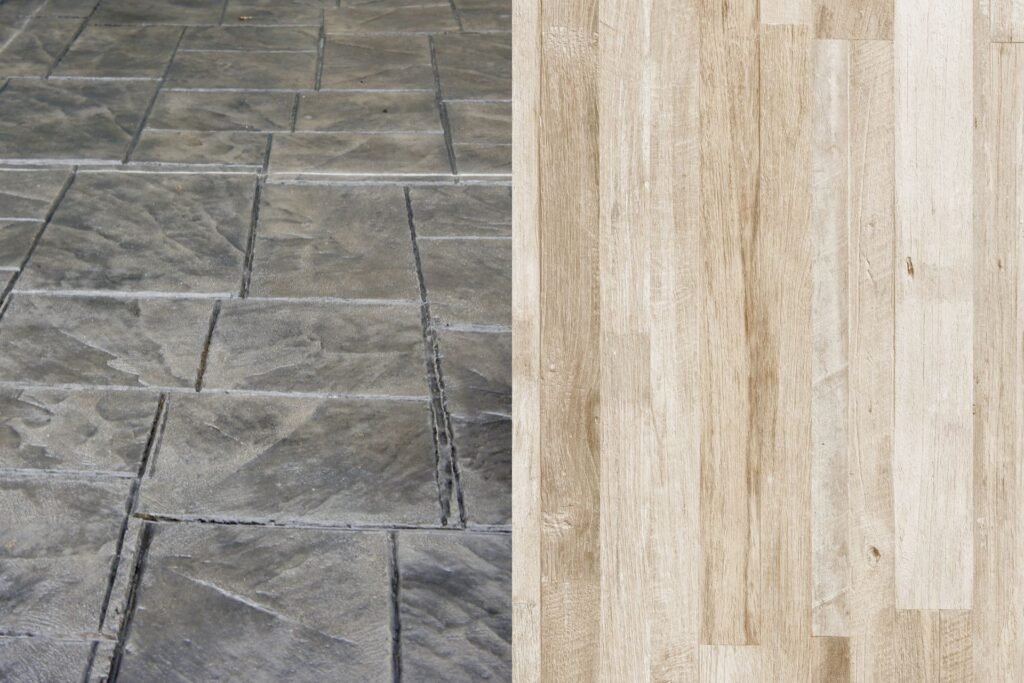
Pros And Cons Of Concrete Slab Flooring
Pros
Durability: Concrete slab flooring is renowned for its exceptional durability. Unlike other flooring options, it can withstand significant wear and tear, making it ideal for high-traffic areas. This longevity means homeowners and businesses can enjoy a reliable flooring solution for decades without the need for frequent replacements or extensive maintenance. Its resilience against scratches, dents, and other forms of damage ensures a pristine look over the long term, providing excellent value for the initial investment.
Stability: One of the standout features of concrete slab flooring is its stability. It provides a solid and immovable foundation, which minimizes the risk of movement and shifting that can occur with other types of flooring. This stability is particularly beneficial in areas prone to ground movement or where a firm, unyielding base is required. As a result, concrete slabs can help prevent structural issues in the building, contributing to overall safety and integrity.
Thermal Mass: Concrete has excellent thermal mass properties, meaning it can absorb, store, and gradually release heat. This characteristic is particularly advantageous in colder climates where maintaining a warm indoor environment is essential. During the day, concrete absorbs heat from sunlight or indoor heating systems, and at night, it slowly releases this heat, helping to keep indoor spaces warm and reducing the reliance on heating systems. This natural heat regulation can lead to significant energy savings and a more comfortable living environment.
Pest Resistance: Concrete slabs are inherently resistant to pests such as termites, which can cause extensive damage to other types of flooring, especially wood. This resistance eliminates the need for chemical treatments and other pest control measures, reducing maintenance costs and potential health hazards associated with pesticide use. Homeowners can have peace of mind knowing that their flooring is not susceptible to infestations that could compromise its structural integrity.
Cons
Cost: One of the primary drawbacks of concrete slab flooring is the higher initial installation cost. The process of pouring and finishing a concrete slab requires skilled labor and specialized equipment, which can be expensive. Additionally, the preparation work needed to ensure a level and stable base can add to the overall cost. While the long-term benefits and durability of concrete slabs can offset these initial expenses, the upfront investment can be a barrier for some homeowners and businesses.
Comfort: Concrete can be quite hard and cold underfoot, which may not be desirable in living spaces where comfort is a priority. This hardness can make standing or walking on concrete floors for extended periods uncomfortable. Additionally, concrete’s ability to retain cold temperatures can make it less inviting in colder climates unless combined with radiant heating systems or covered with rugs and carpets to improve comfort levels.
Repairs: Repairing a concrete slab floor can be more challenging and costly compared to other flooring types. Cracks and damage often require professional intervention to fix properly, and the repair process can be time-consuming and expensive. In some cases, extensive damage might necessitate replacing large sections of the slab, further increasing the cost and inconvenience. Homeowners must weigh the long-term durability against the potential for difficult and costly repairs.
Environmental Impact: The production of concrete has a significant carbon footprint, contributing to environmental concerns. The manufacturing process involves the extraction of raw materials and the emission of large amounts of CO2, a greenhouse gas that contributes to global warming. While concrete is durable and long-lasting, which can offset some of its environmental impact over time, it is essential to consider sustainable alternatives and practices when possible to mitigate its ecological footprint.
By understanding these pros and cons, homeowners and businesses can make an informed decision about whether concrete slab flooring is the right choice for their needs. Balancing durability, stability, and pest resistance with cost, comfort, repair challenges, and environmental impact will help ensure a flooring solution that meets both functional and aesthetic requirements.
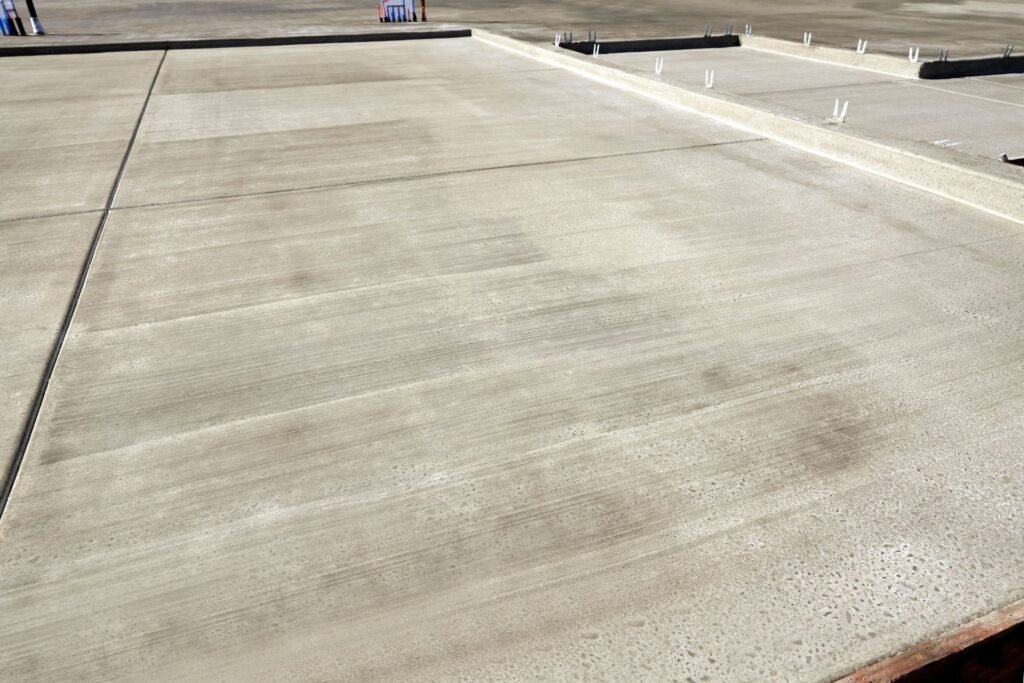
Pros And Cons Of Timber Flooring
When it comes to flooring options, timber is a classic choice that offers a range of benefits and a few drawbacks. Let’s delve into the pros and cons of timber flooring to help you decide if it’s the right fit for your home.
Pros
Aesthetic Appeal
Timber flooring is renowned for its warm, natural look that adds a unique character to any space. The rich grains and textures of timber create a visually appealing environment that can enhance the overall ambiance of your home. Whether you prefer a rustic charm or a sleek modern aesthetic, timber flooring offers a variety of finishes and styles to match your personal taste.
Comfort
Compared to concrete floors, timber is softer and warmer underfoot. This added comfort can make a significant difference, especially in areas where you spend a lot of time standing or walking, such as kitchens and living rooms. Timber floors can create a cozy, inviting atmosphere that is perfect for family gatherings and daily living.
Versatility
One of the standout features of timber flooring is its versatility. With numerous styles, colors, and finishes available, you can customize your flooring to suit any design theme. From traditional oak to exotic hardwoods, timber flooring can be tailored to fit both contemporary and classic interiors, making it a flexible choice for any home.
Insulation
Timber flooring provides excellent natural insulation properties. It helps maintain a consistent indoor temperature by retaining heat during the colder months and staying cool during warmer periods. This can contribute to energy efficiency and comfort, potentially reducing your heating and cooling costs over time.
Cons
Durability
While timber flooring can last for many years, it is susceptible to damage from moisture and pests. Excessive exposure to water can cause timber to warp or rot, and pests like termites can wreak havoc on your floors. To mitigate these risks, it’s essential to ensure proper installation and take preventive measures such as regular inspections and treatments.
Maintenance
Timber floors require regular maintenance to keep them looking their best. This includes tasks like sanding and sealing to protect the surface and enhance its appearance. Depending on the level of foot traffic and wear, you may need to perform these maintenance activities periodically to preserve the longevity and beauty of your timber flooring.
Cost
The cost of timber flooring can be a significant consideration. High-quality timber and professional installation can be expensive, making it a pricier option compared to other flooring materials. However, many homeowners find the investment worthwhile due to the aesthetic and functional benefits timber provides.
Environmental Concerns
Sustainability is an important factor when choosing timber flooring. The source of the timber can have environmental implications, with concerns about deforestation and the impact on ecosystems. To address these concerns, look for timber that is certified by reputable organizations, ensuring it is harvested from sustainable and responsibly managed forests.
In conclusion, timber flooring offers a blend of aesthetic appeal, comfort, versatility, and insulation benefits. However, it also comes with considerations regarding durability, maintenance, cost, and environmental impact. Weighing these pros and cons will help you determine if timber flooring is the right choice for your home.
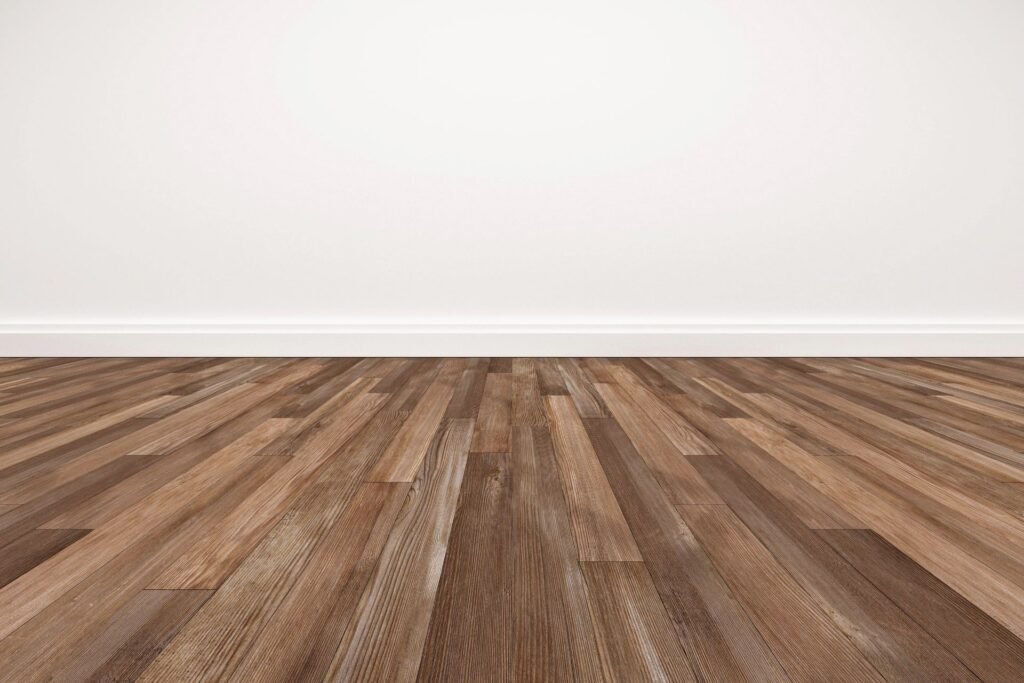
Cost Comparison
When deciding between a concrete slab and a timber floor, understanding the cost implications is crucial. This section delves into the various cost factors, from initial outlays to long-term expenses, and helps you evaluate which option provides better value for your money.
Initial Costs
The initial costs of installing concrete slab flooring and timber flooring can vary significantly. Concrete slabs typically require a higher upfront investment due to the materials and labor involved. Pouring a concrete slab involves site preparation, forming, pouring, and finishing, which can be labor-intensive and costly. On the other hand, timber flooring, while also requiring skilled labor, can be less expensive initially. The cost of timber, the type of wood chosen, and the installation method (such as floating, nail-down, or glue-down) all influence the overall expense. Generally, concrete slabs are more expensive to install compared to most types of timber flooring.
Long-Term Costs
While the initial installation cost is an important consideration, it’s equally important to consider the long-term costs associated with each flooring type. Concrete slabs are known for their durability and low maintenance requirements. Once installed, they typically require minimal upkeep, making them a cost-effective option over time. Repairs, if needed, are often infrequent and straightforward. Conversely, timber flooring, while adding a warm and natural aesthetic to your home, requires more regular maintenance. This can include periodic sanding and refinishing to keep the wood in good condition. Additionally, timber is susceptible to moisture and pest damage, potentially leading to higher repair costs over the years.
Value for Money
Evaluating the value for money involves looking at the overall investment and considering the resale value impact. Concrete slabs, with their longevity and durability, often provide a strong return on investment. They are particularly valued in markets where a modern, industrial look is in demand. Additionally, homes with concrete slab flooring may appeal to buyers looking for low-maintenance living. Timber flooring, while potentially more expensive to maintain, can also offer excellent value. Quality timber floors are highly desirable for their aesthetic appeal and timeless elegance, often boosting the resale value of a home. In regions where traditional or classic home designs are popular, timber flooring can significantly enhance marketability and resale price.
In conclusion, both concrete slabs and timber floors have their own set of cost considerations. Concrete slabs tend to have higher initial costs but lower maintenance expenses, offering a robust long-term investment. Timber floors, while more maintenance-intensive, provide a warm and inviting look that can enhance a home’s resale value. Assessing your priorities and the specific market conditions can help you determine which flooring option offers the best value for your needs.
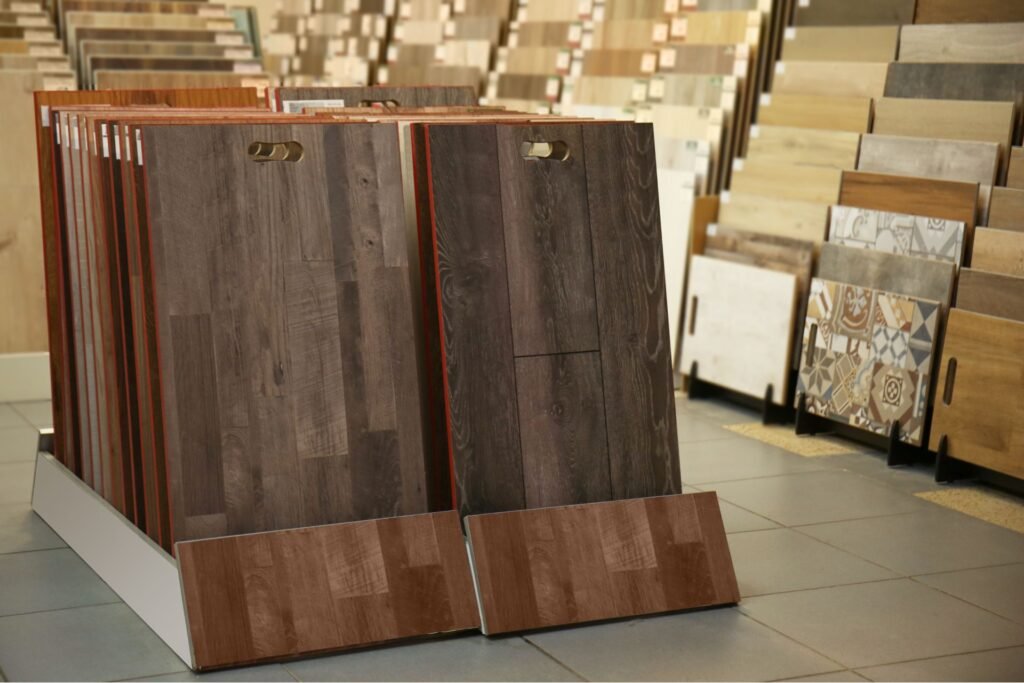
Environmental Impact
Concrete Slab Flooring
Concrete slab flooring is a popular choice due to its durability and strength, but it comes with significant environmental implications. The production of concrete involves the extraction and processing of raw materials like limestone, which releases a substantial amount of carbon dioxide (CO2) into the atmosphere. In fact, the cement industry is one of the largest producers of CO2, accounting for about 8% of global emissions. This high carbon footprint is a critical issue when considering the environmental impact of concrete slab flooring.
Additionally, the process of making concrete is highly energy-intensive. From the mining of raw materials to the kiln firing and the transportation of heavy cement, every step consumes a significant amount of energy, often derived from non-renewable sources. This further exacerbates the environmental footprint of concrete flooring.
Despite these challenges, there are ways to reduce the environmental impact of concrete slabs. Innovations in the industry, such as the use of supplementary cementitious materials (SCMs) like fly ash or slag, can help decrease the amount of cement required and thus lower CO2 emissions. Moreover, adopting energy-efficient production techniques and utilizing renewable energy sources can also mitigate some of the environmental damage.
Timber Flooring
Timber flooring, on the other hand, is often touted as a more sustainable option, but its environmental impact largely depends on how the timber is sourced and managed. When timber is harvested from well-managed forests where trees are replanted and biodiversity is maintained, it can be a renewable resource. However, irresponsible logging practices can lead to deforestation, loss of wildlife habitat, and a reduction in biodiversity.
Sustainable forestry practices are essential for minimizing the environmental impact of timber flooring. These practices include selective logging, which ensures that only mature trees are harvested, and the use of certified sustainable wood products. Certifications like the Forest Stewardship Council (FSC) or the Programme for the Endorsement of Forest Certification (PEFC) provide assurance that the wood used comes from responsibly managed forests.
Moreover, timber has the added benefit of being a carbon sink. Trees absorb CO2 as they grow, and when used in construction, this carbon remains stored in the wood for the lifetime of the building. This can help offset some of the emissions associated with timber production and processing.
Green Alternatives
To further mitigate the environmental impact of both concrete and timber flooring, several eco-friendly alternatives and practices can be considered. One such alternative is the use of recycled materials. For instance, recycled concrete aggregate (RCA) can be used in place of virgin aggregates in concrete production, reducing the need for new raw materials and lowering the overall carbon footprint.
Similarly, reclaimed wood can be used for flooring, providing a second life to timber that might otherwise end up in a landfill. This not only conserves natural resources but also reduces the energy required to process new timber.
Another green practice is the use of low-VOC (volatile organic compounds) finishes and adhesives. These products emit fewer harmful chemicals into the air, contributing to better indoor air quality and a healthier living environment.
Lastly, advancements in construction techniques, such as cross-laminated timber (CLT), offer promising sustainable alternatives. CLT is a strong, lightweight wood panel system that can replace traditional concrete and steel in certain applications, providing a lower-carbon option with similar structural benefits.
In conclusion, while both concrete slab and timber flooring have their environmental challenges, adopting sustainable practices and exploring green alternatives can significantly reduce their impact. Making informed choices about materials and methods is crucial for building a more sustainable future.
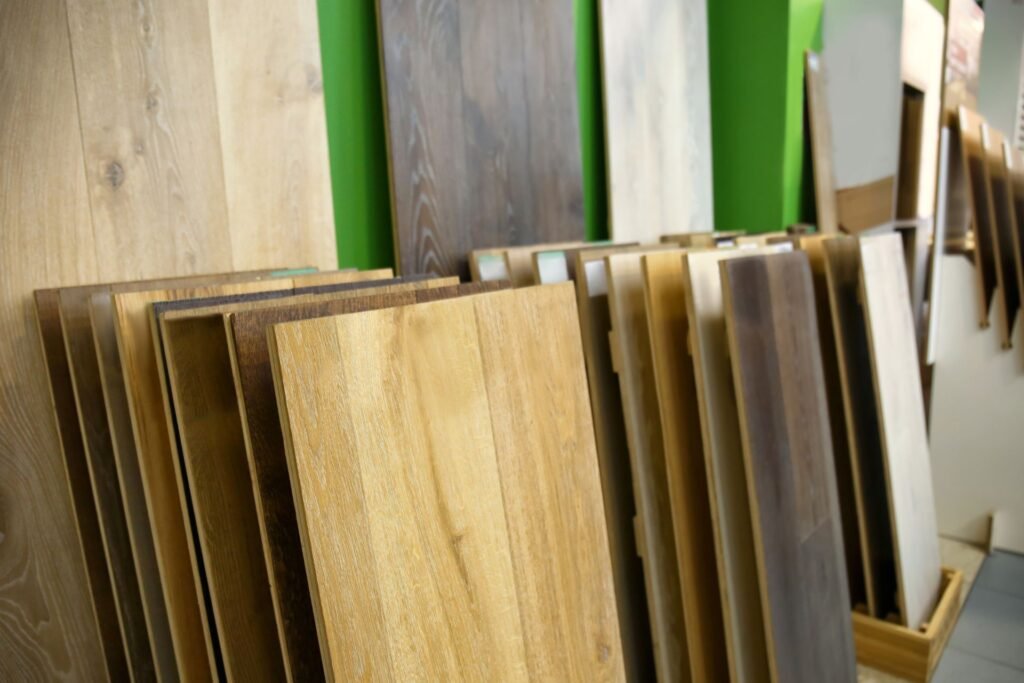
Suitability For Different NZ Climates
When considering the ideal flooring for your New Zealand home, understanding how different materials perform in varying climates is crucial. Both concrete slabs and timber floors have their strengths and weaknesses depending on the local environment. Let’s delve into how each type of flooring fares across New Zealand’s diverse climates.
Concrete Slabs in NZ Climates
Concrete slabs are renowned for their durability and strength, making them a popular choice for many New Zealand homes. However, their performance can vary significantly depending on the climate:
Coastal Areas
In coastal regions, homes are often exposed to high humidity and salty air. Concrete slabs excel in these conditions because they are resistant to moisture and do not suffer from the same warping or decay issues that can affect timber. Additionally, concrete’s thermal mass can help keep homes cooler in hot, coastal climates by absorbing and slowly releasing heat.
Colder Regions
In colder areas of New Zealand, such as the South Island, concrete slabs provide excellent thermal efficiency when paired with proper insulation. The thermal mass of concrete absorbs heat during the day and releases it slowly at night, maintaining a stable indoor temperature. This can be particularly beneficial in regions with significant temperature fluctuations between day and night.
Seismic Activity
New Zealand’s susceptibility to earthquakes also makes concrete slabs an attractive option. Their rigidity and strength offer better resistance to ground movement compared to timber floors, reducing the risk of structural damage during seismic events.
Timber Floors in NZ Climates
Timber floors offer a warm, natural aesthetic that many homeowners find appealing. However, their performance is more susceptible to climatic conditions:
Humidity
In areas with high humidity, such as the North Island’s subtropical regions, timber floors can be prone to swelling and warping. It is essential to choose timber species that are more resistant to moisture and to ensure proper sealing and finishing to protect the wood.
Temperature Variations
Timber floors can expand and contract with temperature changes. In regions with extreme temperature variations, this can lead to gaps or cracks in the flooring over time. However, modern engineered timber floors are designed to minimize these issues, offering better stability across different climates.
Insulation
Timber floors generally provide less thermal mass compared to concrete slabs. This means they do not retain heat as effectively, which can be a drawback in colder climates. However, they can be combined with underfloor heating systems to enhance comfort and energy efficiency.
Case Studies or Examples
Concrete Slab in Coastal Northland
A family home in Northland, situated near the coast, features a concrete slab foundation. The homeowners report excellent durability with minimal maintenance despite the high humidity and salty air. The thermal mass of the concrete helps keep the house cool during the summer, enhancing the overall comfort of the living space.
Timber Floors in Central Otago
In Central Otago, known for its colder winters, a house with engineered timber floors showcases the material’s ability to adapt to temperature variations. The floors are paired with underfloor heating, providing a cozy and warm environment throughout the winter months. The homeowners appreciate the natural look and feel of timber, along with the enhanced stability provided by the engineered design.
Concrete Slab in Seismic Wellington
A home in Wellington, an area prone to earthquakes, uses a reinforced concrete slab. The owners chose this option for its superior earthquake resistance and have found it to be a reliable and low-maintenance solution. The concrete slab has withstood several minor seismic events with no visible damage, providing peace of mind.
Timber Floors in Auckland’s Humid Climate
An Auckland home features high-quality hardwood timber floors, chosen for their resilience against the city’s humid climate. The floors have been expertly sealed and maintained, showing no signs of warping or swelling after several years. The homeowners enjoy the aesthetic appeal and the comfortable feel of timber underfoot.
In conclusion, both concrete slabs and timber floors have their place in New Zealand homes, with their suitability largely dependent on local climatic conditions. By understanding these differences, homeowners can make informed decisions to ensure their flooring performs optimally, providing comfort and durability for years to come.
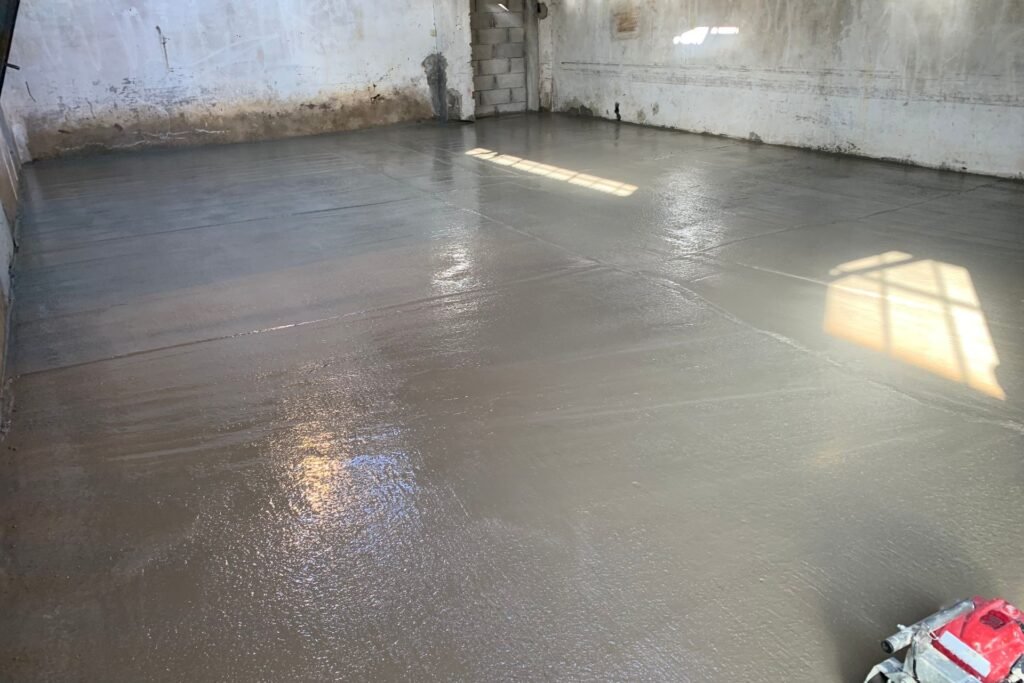
Practical Considerations
When deciding between concrete slabs and timber floors, several practical considerations come into play. These factors can significantly impact your project’s timeline, budget, and overall satisfaction. Let’s delve into these considerations, comparing installation time and disruption, compatibility with underfloor heating, and aesthetic flexibility.
Installation Time and Disruption
Concrete Slab
Installation Time: Pouring and curing concrete slabs can be time-consuming. The process involves site preparation, formwork, pouring the concrete, and allowing it to cure properly, which can take several weeks.
Disruption: The heavy machinery and significant site preparation required can cause substantial disruption. This includes noise, dust, and restricted access to the construction site.
Timber Floor
Installation Time: Timber floors typically have a quicker installation process. Once the subfloor is prepared, timber boards can be laid relatively quickly, often within a few days.
Disruption: While there will still be some disruption, it is generally less intrusive than concrete slab installation. The process is quieter and produces less dust and debris.
In summary, if minimizing disruption and time is a priority, timber floors might be the better choice. However, concrete slabs offer durability and stability that might justify the longer installation period for some projects.
Underfloor Heating
Concrete Slab
Compatibility: Concrete slabs are highly compatible with underfloor heating systems. The concrete acts as a thermal mass, effectively retaining and distributing heat, which makes it an energy-efficient option for maintaining a consistent temperature.
Efficiency: The thermal mass property of concrete ensures that once the floor is heated, it stays warm for a longer period, reducing energy consumption and costs.
Timber Floor
Compatibility: Timber floors can also be compatible with underfloor heating but with some limitations. Timber is a natural insulator, which can affect the efficiency of heat distribution.
Considerations: Special considerations need to be taken to ensure the timber does not warp or crack due to temperature changes. Using engineered timber or ensuring proper installation techniques can mitigate these risks.
For projects prioritizing energy efficiency and effective heat distribution, concrete slabs are often the preferred choice. However, with the right precautions, timber floors can also accommodate underfloor heating.
Aesthetic Flexibility
Concrete Slab
Design Flexibility: Concrete slabs offer a range of design possibilities. They can be polished, stained, or stamped to create various finishes and textures. This versatility allows concrete to fit well with modern, industrial, and minimalist interior styles.
Customization: The ability to customize the surface finish means concrete can mimic other materials, providing a sleek and contemporary look that integrates seamlessly with different design themes.
Timber Floor
Design Flexibility: Timber floors are renowned for their natural beauty and warmth, making them a popular choice for various interior styles, from rustic to contemporary. Different wood types, stains, and finishes can dramatically change the appearance and feel of a space.
Timeless Appeal: Timber’s timeless appeal and natural texture add character and a sense of tradition to any room. It is versatile enough to complement both classic and modern décor.
In terms of aesthetic flexibility, both concrete and timber have their unique advantages. Concrete offers a broad range of modern and customizable finishes, while timber provides a timeless and natural look that can suit a variety of interior styles.
Choosing between a concrete slab and timber flooring involves careful consideration of various practical aspects. Concrete slabs offer durability, effective underfloor heating compatibility, and modern design flexibility, though they come with longer installation times and more disruption. Timber floors provide quicker installation, less disruption, and a warm, natural aesthetic, though special care is needed for underfloor heating compatibility. Understanding these practical considerations will help you make an informed decision that best suits your project’s needs and your personal preferences.
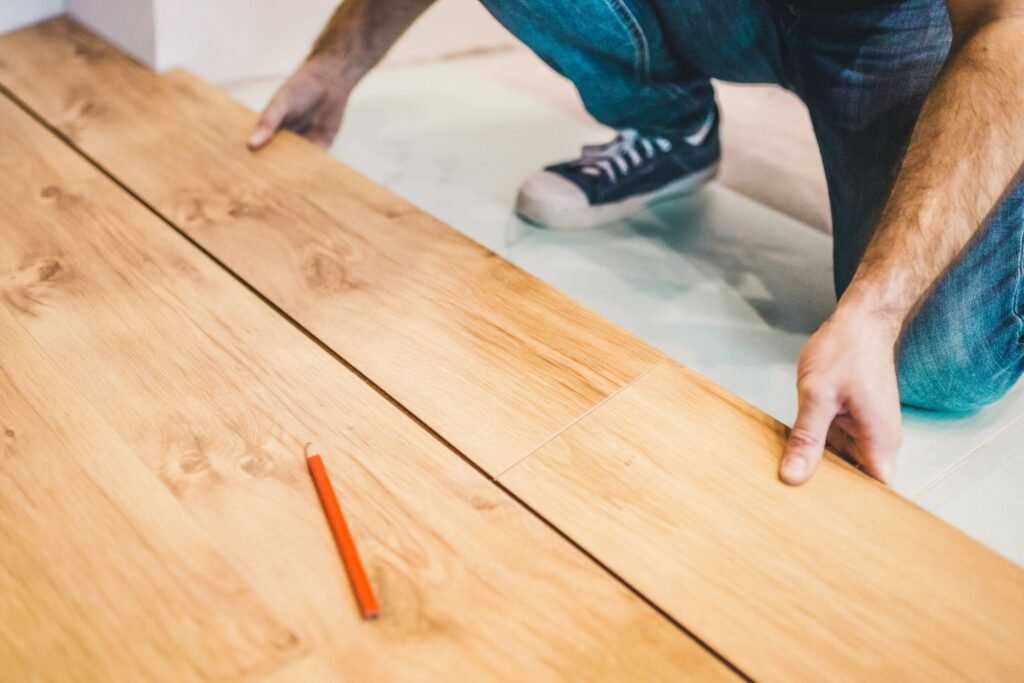
Making The Decision
Choosing between a concrete slab and a timber floor is a significant decision that will impact your home’s comfort, aesthetics, and value. To make an informed choice, you should consider several factors that align with your personal preferences, budget constraints, and future plans.
Personal Preferences
Your personal taste and lifestyle play a crucial role in selecting the right flooring option. Think about the look and feel you want in your home. Timber floors, for instance, offer a warm, natural appearance that can create a cozy and inviting atmosphere. They are perfect for those who appreciate classic elegance and a connection to nature. On the other hand, concrete slabs provide a sleek, modern aesthetic that works well in contemporary designs. They are ideal for homeowners who prefer a minimalist, industrial look.
Moreover, consider how your lifestyle aligns with each option. Timber floors are more comfortable underfoot and are better suited for families with young children or elderly members, as they are softer and less likely to cause injuries during falls. Concrete slabs, while harder and cooler, are incredibly durable and easy to maintain, making them a great choice for busy households or those with pets.
Budget Constraints
Balancing quality and cost is essential when deciding between a concrete slab and a timber floor. Start by setting a realistic budget for your flooring project. Timber floors can be more expensive initially due to the cost of high-quality wood and the labor-intensive installation process. However, they can add significant value to your property and provide a timeless appeal that may save you money in the long run by reducing the need for frequent updates or replacements.
Concrete slabs, although often cheaper to install, can also vary in price depending on the finish and any additional treatments you choose. Polished concrete, for example, can be more costly but offers a refined look and increased durability. When evaluating your budget, consider not only the upfront costs but also the long-term maintenance expenses. Timber floors may require more frequent upkeep, such as polishing or refinishing, whereas concrete slabs are relatively low-maintenance.
Future Plans
Your long-term plans should heavily influence your flooring decision. If you plan to renovate your home or sell it in the near future, consider how each option will impact your property’s value and appeal to potential buyers. Timber floors are often seen as a premium feature that can enhance the attractiveness of your home on the market. Their timeless beauty and versatility can appeal to a wide range of buyers, potentially increasing your resale value.
Conversely, if you intend to stay in your home for many years, think about how the flooring will hold up over time. Concrete slabs are known for their durability and longevity, making them a wise investment for homeowners looking for a flooring solution that will stand the test of time. They are resistant to wear and tear, moisture, and pests, ensuring that your floors remain in excellent condition for decades.
Additionally, consider any future renovations or expansions. Concrete slabs can support heavy structures and are a solid foundation for further building, whereas timber floors may require additional support and consideration during structural changes.
In conclusion, making the decision between a concrete slab and a timber floor involves careful consideration of your personal preferences, budget constraints, and future plans. By evaluating these factors, you can choose a flooring option that not only meets your immediate needs but also supports your long-term goals, ensuring a comfortable and stylish living space for years to come.

FAQs: About Concrete Slab Vs Timber Floor NZ
What are the main differences between concrete slab and timber flooring?
Concrete slab flooring is a solid, durable option known for its stability and thermal mass, making it ideal for colder climates. Timber flooring, on the other hand, offers a warm, natural look, better insulation, and a softer feel underfoot.
Which type of flooring is more cost-effective in the long run?
While concrete slabs may have higher initial installation costs, they typically require less maintenance and have a longer lifespan. Timber floors, although potentially more expensive initially, can add significant aesthetic and resale value to a home but require regular maintenance.
How do concrete slabs perform in New Zealand’s varying climates?
Concrete slabs are excellent in colder regions due to their thermal mass, which helps retain heat. However, they can feel cold underfoot in areas with milder climates unless combined with underfloor heating.
Are timber floors suitable for coastal areas in New Zealand?
Yes, timber floors can be suitable for coastal areas, but it’s essential to choose the right type of timber and ensure proper treatment to resist moisture and humidity.
What are the environmental impacts of choosing concrete slab flooring?
Concrete production has a high carbon footprint due to the energy-intensive processes involved. However, concrete slabs are durable and long-lasting, potentially reducing the need for frequent replacements.
How sustainable is timber flooring?
Timber flooring can be sustainable if sourced from certified, responsibly managed forests. Look for timber with FSC (Forest Stewardship Council) certification to ensure environmental responsibility.
Can I install underfloor heating with both concrete slabs and timber floors?
Yes, underfloor heating systems can be installed with both types of flooring. Concrete slabs are particularly effective at retaining and evenly distributing heat, while timber floors can also be used with underfloor heating with proper insulation and installation techniques.
What maintenance does timber flooring require?
Timber floors need regular maintenance, including cleaning, sanding, and sealing, to keep them looking good and to protect them from wear and moisture damage.
Which flooring option is better for households with pets?
Concrete slabs are more resistant to scratches and stains, making them a practical choice for households with pets. Timber floors can also be used but may require more upkeep to maintain their appearance.
How do I choose the right flooring for my home?
Consider your budget, aesthetic preferences, climate, and lifestyle needs. Concrete slabs offer durability and low maintenance, while timber floors provide warmth and character. Consulting with local builders or flooring experts can also help you make the best decision for your specific situation.
Conclusion
In conclusion, this article has explored the various aspects of [topic], including its benefits, potential drawbacks, and practical applications. We’ve delved into the key points such as [key point 1], [key point 2], and [key point 3], providing a comprehensive overview to help you make informed decisions. As we wrap up, it’s important to consider these factors carefully and weigh them against your specific needs and circumstances. Remember, while this guide offers valuable insights, seeking personalized advice from professionals can further enhance your understanding and outcomes. We encourage you to share your experiences in the comments below or reach out to experts for tailored guidance. Your engagement helps us create more relevant and helpful content for everyone.
About the Author:
Mike Veail is a recognized digital marketing expert with over 6 years of experience in helping tradespeople and small businesses thrive online. A former quantity surveyor, Mike combines deep industry knowledge with hands-on expertise in SEO and Google Ads. His marketing strategies are tailored to the specific needs of the trades sector, helping businesses increase visibility and generate more leads through proven, ethical methods.
Mike has successfully partnered with numerous companies, establishing a track record of delivering measurable results. His work has been featured across various platforms that showcase his expertise in lead generation and online marketing for the trades sector.
Learn more about Mike's experience and services at https://theleadguy.online or follow him on social media:

